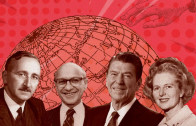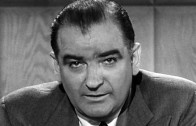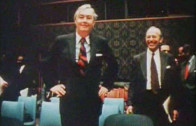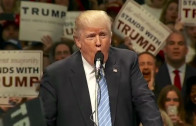This Is Neoliberalism
This Is Neoliberalism is a series of video essays that explore the origins and makings of neoliberalism–the dominant ideology of capitalism. The series explains what neoliberalism is and where it came from. Economic liberalisation, privatisation of the public sphere, deregulation of corporations, tax cuts for the rich, “free trade,” “austerity,” and reductions in government spending in order to increase the role of the private sector in society are just some of the many themes of neoliberalism, which as an ideology, fundamentally seeks to increase the power of corporations and ensure wealth remains shifted to the upper class. The series begins in 1918, and takes us up to modern politics, through globalisation, and to the modern ruling economy.
Series
Neoliberalism is an economic ideology that exists within the framework of capitalism. Over four decades ago, neoliberalism became the dominant economic paradigm of global society. In this series, we’ll trace the history of neoliberalism, starting with a survey of neoliberal philosophy and research, a historical reconstruction of the movement pushing for neoliberal policy solutions, witnessing the damage that neoliberalism did to its first victims in the developing world, and then charting neoliberalism’s infiltration of the political systems of the United States and the United Kingdom. Learn how neoliberalism is generating crises for humanity at an unprecedented rate.
Neoliberalism was a reaction. It was an effort to disassemble a previous vision of society that once held sway over most of the world. In order to understand neoliberalism, it’s important to first understand the world before neoliberalism; the world which neoliberalism considered unacceptable, and in need of urgent reconfiguration. In part two, learn about the world of embedded liberalism.
The story of neoliberalism is a story about the power of ideas. Embedded liberalism was in power, but it was not without resistance. Academics and businessmen who opposed the New Deal and British social democracy were only begrudgingly accepting of the situation at best, or on the warpath against government intervention in the economy at worst. These two factions allied with one another to create an idea so powerful that it would covertly undo their losses to embedded liberalism by supplanting it entirely. This is where the story of neoliberalism begins.
In 1939, a fragile world which had just begun to climb out of the depths of global economic depression, and ended the first truly global war in recorded history only 25 years earlier, peered downward into an abyss blacker than any it had ever glimpsed before. By the close of the 1940’s, global civilization was sitting on one of the most profound inflection points in all of human history. Much, but not all of the world, was about to experience unprecedented prosperity under embedded liberalism, and the ideals of social democracy had never been more ascendant. However, the truth was that the post-war consensus was far from safe. It was within this tension, between the magnificent gains of social democracy and the hostile road laid before it, that Hayek and the Mont Pelerin Society were poised to begin dissolving the ground beneath all opponents of neoliberalism.
The world we live in today was born the moment World War II ended. But though it may be accurate to say that the modern world lives in the shadow of World War II, the more precise answer is that the modern world lives in the shadow of the decades immediately following World War II. These three decades–the 50’s, 60’s and 70’s–were the critical years that would determine the fate of Keynes’ evolution of liberalism, and the path leading away from a conflict whose devastation still remains unsurpassed to this day. In order to understand how neoliberalism supplanted the Postwar Consensus in the three decades immediately following World War II, we must investigate the evolution of neoliberal thought during the postwar period, which would one day achieve a neoliberal revolution in approximately 1981.




